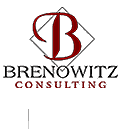


|
Issue # 9 - Working with Large Teams In this issue, you will find: 1. A discussion of working with larger and larger teams 3. Pointers to additional information on this topic ___________________________________________ 1. TRENDS IN TEAM DEVELOPMENT: WHAT TO DO WITH LARGE TEAMS Have you noticed?? Teams have been getting larger. This is a trend we've noticed over the last five years or so, but in our practice, it's become even more pronounced just in the last year. It used to be that the membership of a team, be it a staff of direct reports, a task team, or a product development team, was around eight to 12 people, and rarely more than 15. In their now-classic research on high-performing teams, Katzenbach and Smith's definition begins, "A team is a small number of people…," and they observe that "virtually all the teams (that we know about have) ranged between two and twenty-five people (The Wisdom of Teams, p. 45)." Where a team is significantly larger than this, it is typically comprised of a number of sub-teams whose work is coordinated. But with the flattening of organization structures, the span of control of many managers has become larger. One of our clients has over twenty direct reports. Others may have fewer direct reports, but they recognize the need to involve people from other parts of the organization in order to influence outcomes, facilitate interdependencies, or have access to data and input and include dotted line reports in some or all of their staff and/or planning meetings. The scope or complexity of a new product or the need to get a project done faster may result in more people being assigned to a team. And as the number of members increases, so does the complexity of the interactions among them. We know from the enormous amount of research that has been done on the characteristics and attributes of high-performing teams and the highly consistent findings of these studies that, among other things, their success is dependent to a large extent on the ability of the members to work collaboratively. Collaboration requires high trust, access to information, and a lot of communication and interaction. So here is the problem: as numbers and complexity increase, it becomes considerably more difficult for the members to establish relationships, build and sustain trust, engage in conversations, and resolve conflicts, all of which are known to be essential abilities of effective teams. As teams get larger, the likelihood that they will be able to work together effectively actually diminishes. Here are several of the many reasons for this:
Much of what we know about how to work with and increase the effectiveness of teams has been derived from small group and interpersonal development methodologies that have evolved over the past 50 years. Contributions from Systems Theory have enhanced their applicability in work settings. More recently, some new approaches to the development of large teams, communities, and systems have emerged. Based on the premise that the pace of this work can be accelerated and enriched by bringing the relevant whole system into the room and involving them from the start, these processes utilize a variety of approaches and methods for engaging participants and developing commitment. There are a variety of processes now being used, including Future Search (Weisbord & Janoff), The Conference Model (Axelrod), Open Space (Owen), and Real Time Strategic Change (Dannemiller & Jacobs). What is both encouraging and promising about these approaches is that it now becomes possible to:
We're excited by the results we've had using these methods with large teams and extended staffs and invite you to discover how they can help you with the limitations of small group processes when faced with ever-expanding teams. _________________________________________- 2. Terms of Engagement: Changing the Way we Change Organizations by Richard H. Axelrod (Berrett-Koehler, 2000) Although revolutionary at its inception, the change management paradigm being used in most companies is no longer sufficient for today's rapidly changing work environment. While it does include more people in process-driven change, it frequently reinforces top-down management, increasing cynicism and resistance. The change management process is ineffective because it allows the few to decide for the many, isolates leaders from organization members, separates the design and implementation processes, and frequently creates a parallel organization that cannot be reintegrated into the mainstream when the change project is completed or abandoned. In his book Terms of Engagement, Richard Axelrod presents a powerful new alternative to the change management process. This "engagement paradigm" provides leaders with a practical, principle-based strategy for creating successful change initiatives. At its heart are four principles:
Widening the circle of involvement includes more people in the process and widens people's perspective to help them let go of self-interest. Expanding the number of people involved creates a critical mass for change so that a small group is no longer in the position of deciding for the large group. Connecting people to each other creates links between people and builds trust. When people connect with each other and to powerful ideas, creativity and action are more likely. Creating communities for action sets up conditions in which people care about the outcomes of what they do together. When we create community, we move beyond being a group of people who may or may not have personal connections to each other to developing a group of connected people with the willingness to work together to accomplish a meaningful goal. Embracing democratic principles provides a set of norms that governs people's behavior. Democratic principles can provide an ethical foundation for the change process in business. They produce trust and confidence in both the change process and those who are leading it. If
you follow the four key principles and enter into an engagement
process in your organization, Axelrod says you can expect that:
Although Axelrod is deeply committed to the concepts embodied in the engagement paradigm, he suggests caution before you begin using this in your organization. If something goes wrong, cynicism and doubt can become epidemic. Organizations that cancel their engagement processes in midstream are actually worse off than those that never start. Because the engagement paradigm widens the circle of involvement, it has huge visibility. Before starting, it is essential that you understand the magnitude of what you are undertaking and ask yourself if you have the willingness, resources, and the organizational position to see it through to completion. The engagement paradigm does have its risks, but if used carefully and wisely, your organization can use this strategy to develop the capacity not only to address current issues but to meet future challenges as well. The only thing missing from Axelrod's thorough explanation of the engagement paradigm is a clear roadmap of how to actually proceed through this process in a step-by-step way. For that you'll have to go to The Conference Model by Emily and Richard Axelrod (Berrett-Koehler, 1999) or Large Group Interventions edited by Barbara Bunker and Billie Alban (Jossey-Bass, 1997). Terms of Engagement is the first book you'd want to read on this topic, though, as it provides the foundation for how to create reputable, sustainable, and meaningful change. ______________________________________________ 3. Websites and Other Resources we've found about this topic include: www.openspaceworld.org is the site for Open Space Technology. www.futuresearch.net is the site for Future Search. www.axelrodgroup.com is the site for The Conference Model. READINGS: In addition to the books mentioned at the end of the book summary… Jacobs, R.W. Real time strategic change. (1994). San Francisco: Berrett- Koehler Publishers Inc. Owen, H. Open space technology: A user's guide. (1997). San Francisco: Berrett-Koehler Publishers, Inc. Weisbord, M. & Janoff, S. Future search: An action guide to finding common ground in organizations and communities. (1995). San Francisco: Berrett-Koehler Publishers, Inc.
|
||||||||
|
||||||||